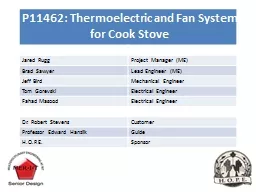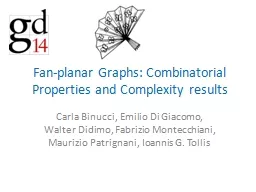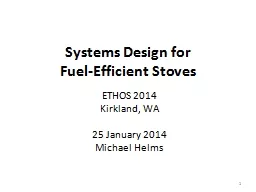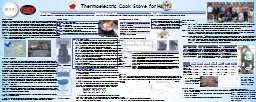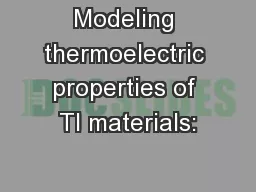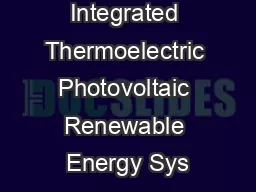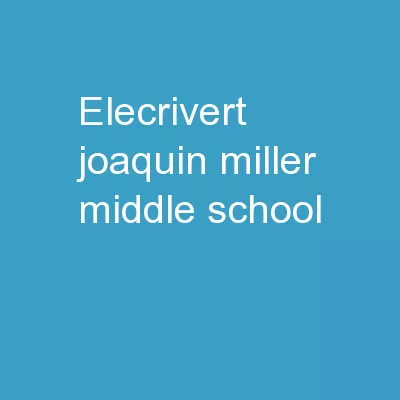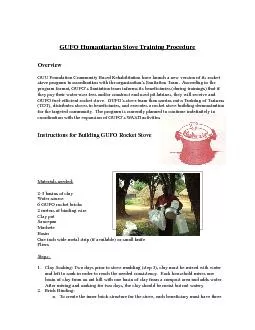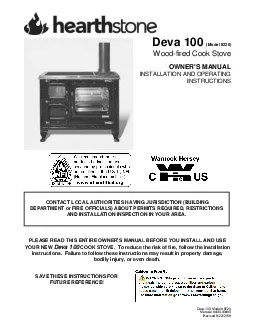PPT-P11462: Thermoelectric and Fan System for Cook Stove
Author : cheryl-pisano | Published Date : 2019-11-20
P11462 Thermoelectric and Fan System for Cook Stove Jared Rugg Project Manager ME Brad Sawyer Lead Engineer ME Jeff Bird Mechanical Engineer Tom Gorevski Electrical
Presentation Embed Code
Download Presentation
Download Presentation The PPT/PDF document "P11462: Thermoelectric and Fan System fo..." is the property of its rightful owner. Permission is granted to download and print the materials on this website for personal, non-commercial use only, and to display it on your personal computer provided you do not modify the materials and that you retain all copyright notices contained in the materials. By downloading content from our website, you accept the terms of this agreement.
P11462: Thermoelectric and Fan System for Cook Stove: Transcript
Download Rules Of Document
"P11462: Thermoelectric and Fan System for Cook Stove"The content belongs to its owner. You may download and print it for personal use, without modification, and keep all copyright notices. By downloading, you agree to these terms.
Related Documents

